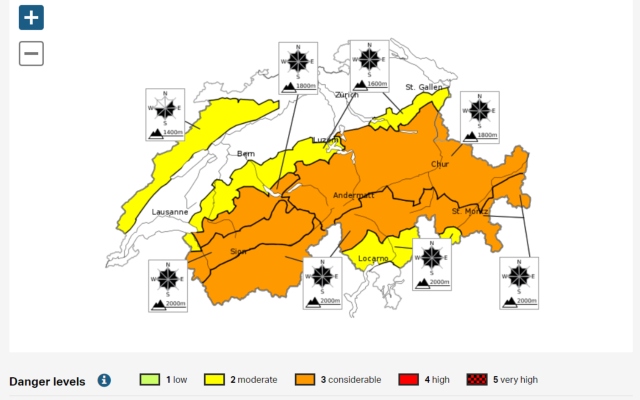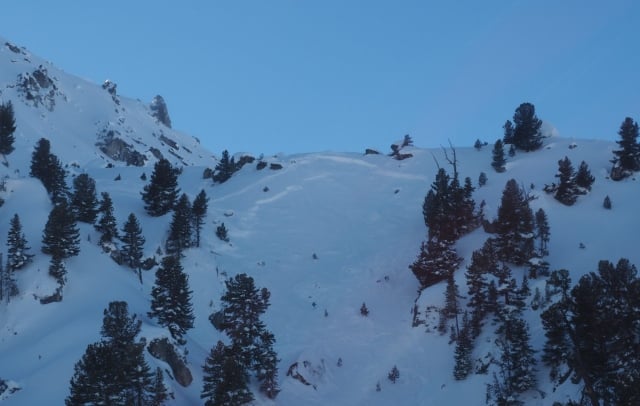The woman was with a group of people who were skiing off piste in the Mont Gond sector of the Plan-du-Fou region when the avalanche struck, Valais cantonal police said in a statement.
The group was quickly able to locate the woman under the snow thanks to an avalanche transceiver but rescue workers were unable to save her life.
Local authorities have opened an investigation, police said.
Meanwhile, two other avalanches hit Valais on Tuesday. In one of those incidents, three hikers who had gone off trail were taken to hospital with minor injuries after being hit by an avalanche in the Verbier area. The other avalanche, on Mont Rogneux in the Lac des Vaux region, saw one person suffer minor injuries.
After the avalanches, Valais police took to Twitter to warn people to take extra care given the current elevated risk.
#avalanchesvs – APPEL A LA PRUDENCE – mi-journée, 3 avalanches ont emporté des personnes à Chassoure, Mont-Gond et Mont-Rogneux (hors-piste). Une prudence particulière est recommandée face au risque avalancheux actuel ! Infos suivront – Polcant VS
— Police Valais (@PoliceValais) January 15, 2019
On Monday, a huge swathe of the central Swiss Alps was placed on maximum alert (level 5) for avalanches after heavy snow this month.
This risk level dropped to level 4, or “high risk” for Tuesday, and this has been again lowered to level 3 (considerable risk) on Wednesday, according to the Swiss snow and avalanche research institute, the SLF.

The SLF avalanche bulletin for Wednesday January 15th. See the full bulletin here.
But the SLF notes people must continue to exercise caution. Level 3 conditions are the most dangerous for back-country recreationists and are responsible for 50 percent of all avalanche fatalities.
People without experience are advised to stay on open ski runs and trails. There is more information (in English) on risk levels on the SLF website.
Friendly weather conditions are expected across Switzerland on Wednesday after heavy snowfall in recent times in many parts of the Swiss Alps.



 Please whitelist us to continue reading.
Please whitelist us to continue reading.